- Home
- Sebastian Junger
Fire Page 11
Fire Read online
Page 11
And that was it. From time to time, over the next few months, nomads reported seeing the hostages up in the mountains, but those reports came to be suspect when it was revealed that the nomads were making money both as paid police informants and as messengers and suppliers for the kidnappers. In April 1996 a captured HUA militant claimed that the hostages had been executed about a week after the fight at Dubrin, in retaliation for Turki’s death, and that the bodies were buried in a village called Magam. The Indian Army scoured the woods and fields around Magam for weeks without finding anything.
“You want to be optimistic, your heart says be optimistic, but your mind says, ‘Sucker, you’ve gotten your hopes up before,’” says Schelly. “We had a full moon right before Id-ul-Fitr [a feast day at the end of Ramadan], and a friend of Don’s said, ‘This is the last full moon that’s going to pass before Don comes back.’ I was so convinced they would release him for Id-ul-Fitr that I packed my bags and got my hair cut. At one point I had to pull the car over on the way home from work and throw up, I was so worked up.”
Id-ul-Fitr came and went, as did the one-year anniversary of the kidnappings, without any word from Al Faran. Reports continued to trickle in from the nomads, but nothing could be confirmed. Schelly went back to Kashmir in the summer of 1996 to meet with HUA leaders, and she returned there a few months later to start up a reward program. Announcements in local newspapers, on local radio shows, and even on the backs of matchbooks offered money to anyone who would come forward with information. The U.S. government also offered a reward, and India followed suit.
“It’s very difficult to say if the program will be successful,” says Len Scensny of the State Department’s South Asia bureau. “We haven’t had verifiable contact with the hostages in over a year, and we have no current information on their well-being. It’s been an ongoing subject of discussion with very senior officials in both India and Pakistan.”
Meanwhile, John Childs has resumed his life in America—working, jogging, spending time with his daughters. People who know Childs have made joking references to Rambo, which bothers him, and some even ask why he didn’t help the others escape. It’s a question that still troubles him. “I rationalize it and say, ‘I couldn’t have done it any other way,’ but without having done it another way I’ll never know,” he says. “I ask myself constantly, ‘Should I have done anything different?’ Sitting here in my office it’s one thing, but when I actually made the decision to escape, I was tired, I was injured, I was miserable, I was terrified. It revealed something about my character, and I’m not even sure if I’m proud of it or not.”
And Jane Schelly’s hopes are slowly waning. While promoting the reward program in the fall of 1996, she decided to visit the village of Seer, where Ostro’s headless body had been found. She talked with the villagers through an interpreter and then walked along a dirt path by the irrigation ditch where, among the rice paddies, two women had spotted the body a year earlier. “It was so incongruous,” says Schelly. “The village was on a little pass, and when I was there, everyone was harvesting the rice. There [were] stacks of rice straw in the fields and mountain peaks in the distance. It was probably one of the most beautiful spots I’ve ever seen in my life.”
If Don Hutchings is still alive, he’s probably looking out at a scene very much like that one: iron gray mountains, a scattering of mud huts, and a dozen villagers cutting their way across the rice paddies at dusk. One of them, undoubtedly, knows Hutchings is there; one of them, undoubtedly, wonders if telling the army would put his family in jeopardy. He decides to say nothing. And Don Hutchings, peering out through a chink in the wall, watches night come sweeping up his valley one more time.
KOSOVO’S VALLEY OF DEATH
1998
It wasn’t much of a town, Prekaz, just a dozen or so farmhouses strung along a dirt road that ran between some low brown hills. In the distance were the mountains of Albania, and all around were the dead winter fields of Kosovo. The houses had red tile roofs, thick whitewashed walls, and traditional courtyards—a defensive layout that probably hadn’t changed much in the past eight hundred years. The pastures began at the road and stretched up to the crests of the hills before ending in ugly swatches of scrub oak. It was the kind of scrub oak that would whip you in the face if you tried to run through it. It was the kind of scrub oak that you could disappear into.
Before dawn on March 5, 1998, hundreds of Serb special police took up positions on the hilltops around Prekaz. There were mortar emplacements, tanks, heavy artillery, 20-mm cannon, and dozens of armored personnel carriers mounted with heavy machine guns. It was the first premeditated military assault by a European government against its own citizens since Nicolae Ceauşescu unleashed his Romanian security police in 1989—and that was basically the last spasm of a dying government. Before that you’d have to go back to the Nazis. Kosovo, a province of Serbia, is only two hundred miles from Italy; tourists come to ski in the winter. There hadn’t been a war here since 1945. And now one of its towns was about to get scraped off the map.
The attack started with an artillery barrage against one household and quickly escalated to a ground assault against the entire village. Police in greasepaint and black uniforms poured out of armored cars and moved down the sodden brown hills, firing automatic weapons and rocket-propelled grenades. Mortar shells dropped into the houses and lit them on fire. Albanian separatist guerrillas were said to be holed up in the town, and the Serbs weren’t taking any chances: They weren’t going to let the bastards surrender, and they weren’t going to let them hide. If necessary, everyone would die.
Women and children took shelter until they realized it was only a matter of time before they were killed, and then they took their chances and ran through the gunfire into the woods. The men weren’t so lucky. Some fought back, and others just hid; either way, they died. They died as their houses collapsed on them; they died as automatic-weapons fire ripped through the cinder-block walls; they died on their doorsteps as they tried to surrender.
“The soldiers shouted for us to come out one by one or they would kill us,” the daughter of a man named Šerif Jašari later told human rights workers. “When my cousin Ćazim came out with his hands up, they killed him on the steps. We ran and had just gone through the first cordon when the soldiers caught my cousin Nazmi, who was helping his mother, Bahtije, along. They grabbed him, tore off the woman’s dress we had given him to wear, and ordered him to lie down on the ground and then to get up. He had to do this many times. Then they fired into his head and back, and I saw his body jerking from the bullets.”
The next person the Serbs shot was the girl’s seventeen-year-old brother, Riad, hitting him twice. He fell to the ground, and his sister and mother took him by the arms and started dragging him into the woods. “We went through the second cordon posted in the street outside the house. Armed soldiers in green uniforms with yellow and black markings and the same colors smeared on their faces,” Jašari’s daughter said. “We hid in the bushes, and up on the hill we met some people we knew, and they drove my brother Riad to a safe place. When Bećir’s wife, Sala, arrived, she said they had shot Bećir in the leg and that he had told her to go with the children. A few days later we heard Bećir was dead.”
Bećir Jašari was a member of a wealthy Albanian family that was said to be involved in an Albanian independence movement in Kosovo. Kosovo is about 90 percent ethnic Albanian but remains part of the Serb-dominated former Republic of Yugoslavia, which stripped it of its autonomy in 1989.
Tensions in the area had been rising steadily since November, when three masked Albanian guerrillas appeared at the funeral of a man killed in a crossfire between Serb police and guerrillas. “The Kosovo Liberation Army is the only force which is fighting for the liberation and national unity of Kosovo!” one of them shouted, and the mourners—twenty thousand strong—responded, “U-Ç-K!” the Albanian initials for the Kosovo Liberation Army. The opposition movement in Kosovo was headed by a lo
ngtime pacifist named Ibrahim Rugova, but it also had an armed wing ready to take the fight into the hills.
Almost immediately after their appearance at the funeral, the KLA began ambushing police cars and sniping at the checkpoints. Then a car chase and shoot-out in late February resulted in the deaths of four policemen and five KLA members. Another badly wounded KLA fighter reportedly dragged himself to the home of Ahmet Ahmeti in a nearby village called Likoane. Like the Jašaris, the Ahmetis were a wealthy family rumored to have links to the KLA.
On February 28 the Serbs struck back. Attack helicopters blasted towns with gun and rocket fire, and policemen in black uniforms dragged people out of their houses and shot them on their doorsteps. Twenty-six were killed. Witnesses said the Ahmeti men over the age of fifteen were separated from the women and children, savagely beaten, and then executed in their courtyard with shotgun blasts to their heads. One had his eyeballs dug out. Journalists who later visited the house reported that the ground was littered with teeth and hair and that a human jawbone hung from a nearby bush.
There was a brief lull while people buried their dead, and then the police moved in on Prekaz, which lay only a few hundred yards from an old munitions factory that had been converted into a barracks for the Serb special police. On the morning of March 5 the police stepped outside their front gate and attacked. Some snipers didn’t even bother leaving the compound. Fifty-five people died in Prekaz, including thirty from the Jašari family alone.
One of the few Jašaris who survived was an eleven-year-old girl named Besarte, who had hidden under a heavy slab on which her mother used to make bread. She remembers shells crashing into the house for hours and her uncle Adem singing folk songs “so the family wouldn’t lose its faith in life.” When the bombardment finally stopped, the bodies of her entire family lay twisted around her. Twenty-four hours later—after another night of siege—several policemen stormed into the house to check for survivors. One stopped in front of Besarte, who played dead, but he put his hand to her chest and felt a heartbeat, so he picked her up and took her to the munitions factory. She arrived spattered with blood, screaming that she wanted to stay with her sisters.
I arrived in Kosovo two weeks after the massacre, on a frigid March night. I drove in with an old friend named Harald Doornbos, a Dutch journalist who had been based in Sarajevo since 1992. For obvious reasons, the Serbs weren’t granting entrance visas to journalists, but Herald knew a dirt road border crossing into Montenegro where the guards—being Montenegrin—couldn’t have cared less what the Serbs wanted. From Montenegro we could easily cross into Kosovo.
We got up early the next morning to try to drive into Drenica, the rural stronghold of the KLA. We crossed a desolate brown plain and plunged into the hill country, the little towns flicking by in our car windows and the mountains on the Albanian border looming in the distance. Guns were coming in over those mountains; Albania was awash in weapons, and the KLA was completely dependent upon help from across the border. The Serb military reportedly had shoot-on-sight orders for anyone in the high peaks, and soldiers regularly ambushed Albanians moving weapons into Kosovo over mountain tracks.
There were said to be KLA training camps inside Albania; in response, the Serbs have massed a tremendous number of heavy weapons at the Albanian border—far more than are needed to stop arms smuggling. The fear is that the Serb Army will cross into Albania to stamp out the camps and that the situation will escalate into an all-out war between Yugoslavia and Albania. Such a conflagration could drag in Greece and Turkey and—in a worst-case scenario—divide the United Nations. Another scenario has it that war in Kosovo might trigger a similar war in Macedonia, which has its own restive Albanian population, and that Greece and Bulgaria could jump in to grab Macedonian land that they have old claims to. More than three hundred American troops are stationed in Macedonia to contain exactly that kind of domino effect, but they are scheduled to be withdrawn this summer.
The towns we passed were dead and empty-looking, and house after house stood half built, abandoned by Albanians who could no longer afford to finish them, because they’d lost their jobs in Serb-controlled businesses. After half an hour we turned down a dirt road and drove until we dead-ended at a railroad tunnel near a river. We stopped, grabbed our notebooks, and walked through the tunnel and into an empty brown valley surrounded by brush-covered hills.
We were worried about KLA snipers—stupidly, both of us were dressed in black, like the Serb secret police—but we were even more worried about Serb snipers. This was the heart of Drenica, an area the police can seal off but not control, an area the KLA can hide in but not defend. It was a no-man’s-land where you could get shot at or you could get invited in for tea, depending on who spotted you first.
We walked for an hour and finally came upon a dozen ethnic Albanians repairing the road. Since the Serb police controlled the highways, there seemed to be a lot of repair work being done on the spider web of dirt roads that connect the villages in Drenica. The men escorted us into one of their houses and sent someone ahead to ask the KLA commander at the next village if we could continue. We sat on the floor, drinking Turkish coffee and watching an American cop show on satellite television; after an hour the man came back and said apologetically that the answer was no, we could not continue. The KLA was not prepared to greet us.
When we stepped outside, we could hear the Serbs shelling some villages a few miles away. The sound rumbled over the hills like a summer rainstorm. As we studied the faces of the farmers around us—rough, unshaven faces of men who had known nothing but hard work their whole lives—it was impossible to tell if they understood what real war would mean. It was impossible to tell if they understood that tragedies like this happen every day, all over the world; that in all probability, no one was going to intervene on their behalf; and that the Serb authorities, like most governments, would stop at almost nothing to retain power.
In 1389, as the myth goes, Prince Lazar of Serbia was visited by St. Ilija in the form of a falcon. It was on the eve of a great battle with the Turks, and Lazar had gathered around him, on the plains of Kosovo, much of the Balkan military elite: Bosnian warlords, Albanian noblemen, and Hungarian horsemen with shamanic bones sewn onto their uniforms. Lazar was understandably nervous—the Turks had wiped out an entire Serb army eighteen years earlier—and wondered if it might not be better to retreat and fight again another day. St. Ilija gave Lazar the choice between a kingdom on earth and a kingdom in heaven; Lazar, wisely choosing the kingdom in heaven, went on to meet his death at the hands of the Turks.
The battle became known as the Battle of Kosovo Polje—the Blackbird Field—and it occupies a particularly fevered part of the Serb psyche. It was on Kosovo Polje that a Serb leader first chose death over subjugation; it was on Kosovo Polje that the guiding maxim of the Serb people, “Only unity saves the Serbs,” was first acted out in all its bloody glory.
Nearly six hundred years after the battle, Slobodan Milošević, the man responsible for igniting the entire Balkan conflict, would stand on the ancient battlefield and whip a crowd of angry Serbs into a nationalist frenzy. “Yugoslavia does not exist without Kosovo!” he yelled, instantly catapulting himself to the top of the political heap. “Yugoslavia would disintegrate without Kosovo!”
Kosovo is not the birthplace of the Serb people, however. The original Serbs migrated southward from Saxony and what is now the Czech Republic in the sixth century A.D. and didn’t settle permanently in Kosovo for another six hundred years. The high-water mark of the Serb empire came in the 1330s, when a brutal nobleman named Stefan Dušan defeated his own father in battle, had him strangled, and then went on to extend his empire throughout Kosovo and into Greece. He built numerous Orthodox monasteries and churches and eventually had himself crowned emperor of the Greeks, Bulgarians, Serbs, and Albanians.
The empire didn’t survive his own death, though; within decades the Turks defeated the Serbs at Kosovo Polje, and three hundred years after tha
t the Turks put down another uprising so ruthlessly that most Serbs fled Kosovo. The void they left behind was filled by the Albanians, who drifted back down out of the mountains with their wild, hill people ways.
Traditional Albanian society was based on a clan system and was further divided into brotherhoods and bajraks. The bajrak system identified a local leader, called a bajrakar, who could be counted on to provide a certain number of men for military duty. In another era Adem Jašari and Ahmet Ahmeti might well have been considered bajrakars. That organization has fallen into disuse, but the clans—basically used to determine allegiances during a blood feud—seem to have survived.
Feuds in this part of the world inevitably break out over offenses to a man’s honor, which include calling him a liar, insulting his female relatives, violating his hospitality, or stealing his weapons. Tradition dictates that these transgressions be avenged by killing any man in the offender’s family, which creates another round of violence. As late as the end of the nineteenth century, one in five adult male deaths was the result of a blood feud, and in Albania today, it is said, a tradition still exists whereby you must kill one man for every bullet in the body of your dead kin.
Seen in the context of the code of male honor, the Serb police have violated just about every blood feud rule in existence, including the killing of women—a provocation above all others. It’s no wonder they have such a hard time maintaining control of Kosovo.
The Kosovars were granted autonomy at the end of World War II, but then aspiring President Milošević had the autonomy revoked in 1989, and the Dayton Accords of 1995, which ended the recent war in Bosnia and Croatia, failed to address the issue of Kosovo’s status. Inevitably, an independence movement was born, funded by a voluntary 3 percent income tax given by the Albanian diaspora and supported by groups in Albania proper.

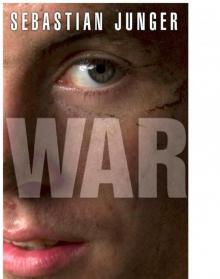 War
War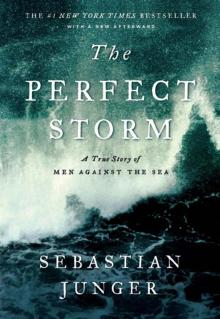 The Perfect Storm: A True Story of Men Against the Sea
The Perfect Storm: A True Story of Men Against the Sea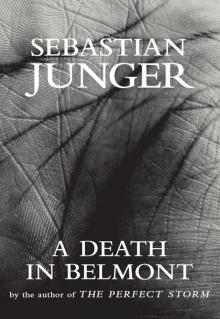 A Death in Belmont
A Death in Belmont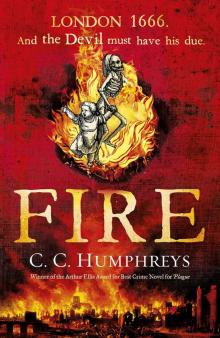 Fire
Fire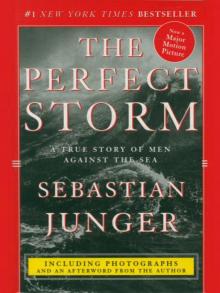 The Perfect Storm
The Perfect Storm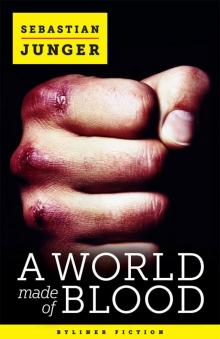 A World Made of Blood (Kindle Single)
A World Made of Blood (Kindle Single)